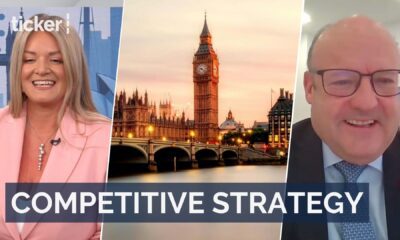Money
Amazon backflips on return to work plan as team leaders take the reign

Money
Stocks rally ahead of Thanksgiving as markets log four days of gains
Markets gain momentum ahead of Thanksgiving, with the Dow up 388 points and Oracle rising 4% amid investor optimism.
Money
Dow surges 500 points amid rate cut optimism
Dow jumps 569 points on fresh hopes for December rate cut and AI market optimism
Money
Gold prices surge as Central Banks buy big, but risks grow ahead
Gold prices surge as central banks increase demand; risks include a stronger dollar and rising interest rates.
-



 Shows2 days ago
Shows2 days agoAI and automation driving sustainability in industries
-



 Shows2 days ago
Shows2 days agoEarly adopters of automation gain significant competitive advantage
-



 Shows2 days ago
Shows2 days agoCybersecurity concerns rise amidst AI industrial adoption
-



 Leaders4 days ago
Leaders4 days agoRegional small businesses thrive through digital marketing strategies
-



 Shows2 days ago
Shows2 days agoHow London is attracting global investment and staying competitive
-



 News2 days ago
News2 days agoRobotics and AI driving fourth industrial revolution innovations
-



 News5 days ago
News5 days agoShoppers cut back this Black Friday as budgets tighten
-



 News5 days ago
News5 days agoNational Guard ambush: Afghan man charged after D.C. shooting









